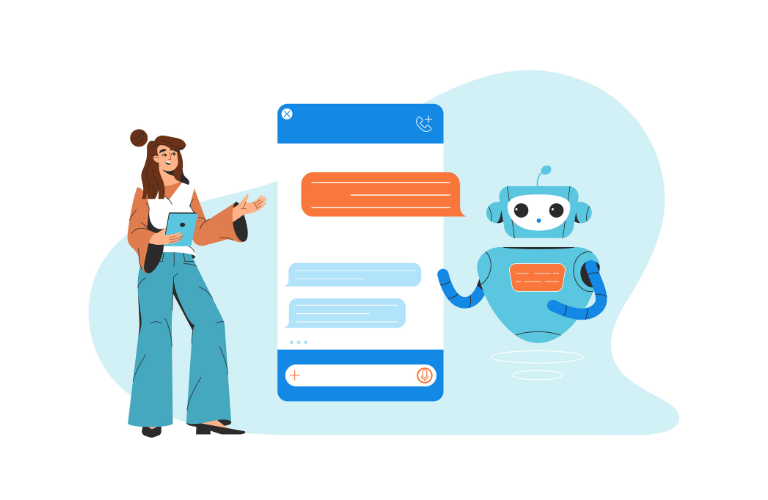ChatGPT for customer service is transforming how businesses connect with users on WordPress. This powerful AI chatbot, developed by OpenAI, offers fast, natural, and personalized responses. It’s perfect for handling inquiries, resolving complaints, and boosting satisfaction.
In this guide, we’ll walk you through integrating ChatGPT for customer service into your WordPress site. You’ll discover practical steps, use cases, and shortcuts to save time while improving user experience. Let’s dive into making your customer support smarter and more efficient.
Table of Contents
Why Choose ChatGPT for Customer Service?
ChatGPT for customer service stands out due to its ability to understand context and respond naturally. Unlike traditional chatbots, it delivers human-like conversations, making it ideal for WordPress websites. Businesses worldwide use it to streamline support and enhance engagement since its launch in 2022.
Here’s why it’s a game-changer:
- Fast Responses: Answers queries instantly, reducing wait times.
- Empathetic Tone: Handles complaints with care, building trust.
- Multilingual Support: Communicates in multiple languages for global reach.
- 24/7 Availability: Supports customers anytime, day or night.
These features make ChatGPT for customer service a must-have for e-commerce, blogs, or service-based WordPress sites struggling with slow or inconsistent support.
Benefits of Using ChatGPT for Customer Service
Integrating ChatGPT for customer service into WordPress offers multiple advantages. It saves time, cuts costs, and improves user satisfaction. Let’s break down the key benefits:
- Automation: Handles repetitive queries like FAQs, freeing your team for complex tasks.
- Cost Savings: Reduces the need for large support teams, replacing multiple agents.
- Personalization: Analyzes user data to tailor responses, boosting engagement.
- Data Insights: Collects interaction data to understand customer needs better.
- Scalability: Manages high query volumes without slowing down.
For WordPress users, these benefits solve pain points like delayed responses or high operational costs, ensuring a smoother customer experience.
How ChatGPT Enhances Customer Support
ChatGPT for customer service goes beyond basic chatbot functions. It tackles specific support challenges with smart solutions. Here are practical ways it improves your WordPress site:
Handling Complaints
ChatGPT generates empathetic, brand-aligned responses to negative feedback. For example, it can draft replies to reviews on social media or emails, calming upset customers and maintaining your reputation.
Upgrading Traditional Chatbots
Older chatbots often misinterpret queries. ChatGPT understands natural language, offering accurate answers to industry-specific questions, like product details or troubleshooting steps.
Summarizing and Translating
Long customer messages? ChatGPT summarizes them for your team. It also translates queries into multiple languages, making communication seamless for international users.
Supporting Your Team
ChatGPT acts as a virtual assistant, helping staff draft responses, categorize queries, or analyze customer behavior. This boosts productivity and reduces errors.
These use cases show how ChatGPT for customer service solves real-world problems, making support faster and more reliable.
Step-by-Step Guide to Integrate ChatGPT on WordPress
Ready to add ChatGPT for customer service to your WordPress site? Using the Chaterimo platform, you can set it up quickly. Follow these simple steps for seamless integration.
Step 1: Sign Up on Chaterimo
Visit the Chaterimo website and create an account. After signing up, verify your email with the token sent to you. Start with the free plan to test the service, then upgrade for advanced features.
Step 2: Build a Knowledge Base
Your chatbot needs data to respond accurately. Here’s how to create a knowledge base:
- Extract content from your WordPress site or upload files (PDF, TXT, up to 5 MB).
- Add product details via XML feeds, like Google Shopping data.
- Edit or update the knowledge base anytime to keep it current.
This ensures ChatGPT for customer service delivers relevant answers.
Step 3: Train and Test the Chatbot
Train the chatbot with your knowledge base. Use Chaterimo’s testing page to check its responses. If answers aren’t accurate, tweak the data or retrain. This step guarantees reliable performance.
Step 4: Embed the Chat Widget
Once satisfied, deploy the chatbot on WordPress:
- Copy the HTML snippet from Chaterimo.
- Install the free Insert Headers and Footers plugin on WordPress.
- Go to Code Snippets > Header & Footer in your dashboard.
- Paste the snippet in the Header section and save.
Your chatbot is now live, ready to assist visitors with ChatGPT for customer service.
Step 5: Customize and Monitor
Adjust the chat widget’s design to match your brand. Monitor interactions via Chaterimo’s analytics to gain insights into user behavior. Use this data to improve responses and optimize performance.
These steps make integration straightforward, even for non-technical users, saving time and effort.
Practical Use Case: E-Commerce Support
Imagine running an e-commerce WordPress site. Customers often ask about shipping, returns, or product specs. Here’s how ChatGPT for customer service helps:
- Scenario: A customer asks, “How long does shipping take?”
- ChatGPT Response: “Shipping takes 3–5 business days within the US. Would you like tracking details or information on expedited options?”
- Outcome: The customer gets a quick, clear answer, reducing frustration and cart abandonment.
This use case shows how ChatGPT for customer service boosts conversions by addressing queries instantly.
Shortcuts to Save Time
Want to make the most of ChatGPT for customer service? These shortcuts streamline setup and management:
- Pre-Built Templates: Use Chaterimo’s FAQ templates to skip manual data entry.
- Auto-Summarization: Let ChatGPT summarize long customer queries for faster team reviews.
- Batch Uploads: Upload multiple product files at once to build the knowledge base quickly.
- Analytics Dashboard: Check Chaterimo’s insights to spot common queries and automate responses.
These tricks cut setup time and keep your chatbot running smoothly, letting you focus on growing your business.
Commands for Better Chatbot Performance
To optimize ChatGPT for customer service, use these commands when training or testing:
- “Respond in a friendly, professional tone.” Ensures brand-aligned replies.
- “Summarize this query in 20 words or less.” Speeds up team reviews.
- “Translate this response to Spanish.” Supports multilingual customers.
- “Prioritize FAQs in responses.” Handles common queries automatically.
These commands fine-tune the chatbot, making it more effective for WordPress users.
Common Challenges and Solutions
While ChatGPT for customer service is powerful, you might face issues. Here’s how to tackle them:
- Challenge: Inaccurate responses.
Solution: Update the knowledge base with clearer data and retrain the chatbot. - Challenge: Slow widget load times.
Solution: Optimize your WordPress site with a caching plugin like WP Rocket. - Challenge: Customers prefer human support.
Solution: Offer a “talk to a human” option in the chat widget.
These solutions ensure a smooth experience for both you and your users.
Final Thoughts
Using ChatGPT for customer service on WordPress is a smart way to enhance user experience and streamline support. By integrating it with Chaterimo, you get a powerful, easy-to-use chatbot that saves time, cuts costs, and keeps customers happy. Follow the steps above to set it up, use shortcuts to optimize, and monitor analytics to stay ahead. Ready to transform your customer service? Sign up with Chaterimo today and see the difference!
FAQs
1. What is ChatGPT for customer service?
It’s an AI chatbot by OpenAI that handles customer queries on WordPress with natural, fast responses.
2. How does it improve my WordPress site?
ChatGPT for customer service automates support, saves costs, and boosts satisfaction with 24/7 availability.
3. Can it handle multiple languages?
Yes, it translates queries and responses, making it ideal for global customers.
4. How do I integrate it into WordPress?
Use Chaterimo to sign up, build a knowledge base, and embed the chat widget with an HTML snippet.
5. Is it cost-effective?
Absolutely. It reduces the need for large support teams, saving money while maintaining quality.
6. What if the chatbot gives wrong answers?
Update the knowledge base and retrain it to improve accuracy.




